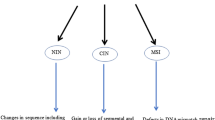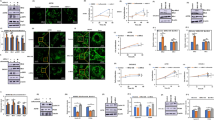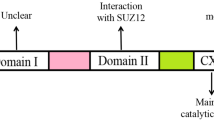Abstract
Microtubule inhibitors (MTIs) such as Taxol have been used for treating various malignant tumors. Although MTIs have been known to induce cell death through mitotic arrest, other mechanisms can operate in MTI-induced cell death. Especially, the role of p53 in this process has been controversial for a long time. Here we investigated the function of p53 in Taxol-induced apoptosis using p53 wild type and p53 null cancer cell lines. p53 was upregulated upon Taxol treatment in p53 wild type cells and deletion of p53 diminished Taxol-induced apoptosis. p53 target proteins including MDM2, p21, BAX, and β-isoform of PUMA were also upregulated by Taxol in p53 wild type cells. Conversely, when the wild type p53 was re-introduced into two different p53 null cancer cell lines, Taxol-induced apoptosis was enhanced. Among post-translational modifications that affect p53 stability and function, p53 acetylation, rather than phosphorylation, increased significantly in Taxol-treated cells. When acetylation was enhanced by anti-Sirt1 siRNA or an HDAC inhibitor, Taxol-induced apoptosis was enhanced, which was not observed in p53 null cells. When an acetylation-defective mutant of p53 was re-introduced to p53 null cells, apoptosis was partially reduced compared to the re-introduction of the wild type p53. Thus, p53 plays a pro-apoptotic role in Taxol-induced apoptosis and acetylation of p53 contributes to this pro-apoptotic function in response to Taxol in several human cancer cell lines, suggesting that enhancing acetylation of p53 could have potential implication for increasing the sensitivity of cancer cells to Taxol.






Similar content being viewed by others
References
Sackett DL, Fojo T (1999) Taxanes and other microtubule stabilizing agents. Cancer Chemother Biol Response Modif 18:59–80
Shu CH, Yang W, Shih YL, Kuo ML, Huang TS (1997) Cell cycle G2/M arrest and activation of cyclin-dependent kinases associated with low-dose paclitaxel-induced sub-G1 apoptosis. Apoptosis 2:463–470
Matson DR, Stukenberg PT (2011) Spindle poisons and cell fate: a tale of two pathways. Mol Interventions 11:141–150
Kops GJPL, Weaver BAA, Cleveland DW (2005) On the road to cancer: aneuploidy and the mitotic checkpoint. Nat Rev Cancer 5:773–785
Sudo T, Nitta M, Saya H, Ueno NT (2004) Dependence of paclitaxel sensitivity on a functional spindle assembly checkpoint. Cancer Res 64:2502–2508
Clarke PA, Allan LA (2010) Destruction’s our delight: controlling apoptosis during mitotic arrest. Cell Cycle 9:4035–4036
Harley ME, Allan LA, Sanderson HS, Clarke PR (2010) Phosphorylation of Mcl-1 by CDK1-cyclin B1 initiates its Cdc20-dependent destruction during mitotic arrest. EMBO J 29:2407–2420
Wertz IE, Kusam S, Lam C et al (2011) Sensitivity to antitubulin chemotherapeutics is regulated by MCL1 and FBW7. Nature 471:110–114
Blagosklonny MV, Fojo T (1999) Molecular effects of paclitaxel: myths and reality (a critical review). Int J Cancer 83:151–156
Wahl AF, Donaldson KL, Fairchild C et al (1996) Loss of normal p53 function confers sensitization to Taxol by increasing G2/M arrest and apoptosis. Nat Med 2:72–79
Woods CM, Zhu J, McQueney PA, Bollag D, Lazarides E (1995) Taxol-induced mitotic block triggers rapid onset of a p53-independent apoptotic pathway. Mol Med 1:506–526
Lanni JS, Lowe SW, Licitra EJ, Liu JO, Jacks T (1997) p53-independent apoptosis induced by paclitaxel through an indirect mechanism. Proc Natl Acad Sci USA 94:9679–9683
Delia D, Mizutani S, Lamorte G, Goi K, Iwata S, Pierotti MA (1996) p53 activity and chemotherapy. Nat Med 2:724–725
Giannakakou P, Nakano M, Nicolaou KC et al (2002) Enhanced microtubule-dependent trafficking and p53 nuclear accumulation by suppression of microtubule dynamics. Proc Natl Acad Sci USA 99:10855–10860
Kruse JP, Gu W (2009) Modes of p53 regulation. Cell 137:609–622
Ferreon JC, Lee CW, Arai M, Martinez-Yamout MA, Dyson HJ, Wright PE (2009) Cooperative regulation of p53 by modulation of ternary complex formation with CBP/p300 and HDM2. Proc Natl Acad Sci USA 106:6591–6596
Sykes SM, Stanek TJ, Frank A, Murphy ME, McMahon SB (2009) Acetylation of the DNA binding domain regulates transcription-independent apoptosis by p53. J Biol Chem 284:20197–20205
Yamaguchi H, Woods NT, Piluso LG et al (2009) p53 acetylation is crucial for its transcription-independent proapoptotic functions. J Biol Chem 284:11171–11183
Tang Y, Zhao W, Chen Y, Zhao Y, Gu W (2008) Acetylation is indispensable for p53 activation. Cell 133:612–626
Stewart ZA, Tang LJ, Pietenpol JA (2001) Increased p53 phosphorylation after microtubule disruption is mediated in a microtubule inhibitor- and cell-specific manner. Oncogene 20:113–124
Damia G, Filiberti L, Vikhanskaya F et al (2001) Cisplatinum and Taxol induce different patterns of p53 phosphorylation. Neoplasia 3:10–16
Ford J, Jiang M, Milner J (2005) Cancer-specific functions of SIRT1 enable human epithelial cancer cell growth and survival. Cancer Res 65:10457–10463
Bunz F, Dutriaux A, Lengauer C et al (1998) Requirement for p53 and p21 to sustain G2 arrest after DNA damage. Science 282:1497–1501
Vaziri H, Dessain SK, Ng Eaton E et al (2001) hSIR2(SIRT1) functions as an NAD-dependent p53 deacetylase. Cell 107:149–159
Ito A, Kawaguchi Y, Lai CH et al (2002) MDM2-HDAC1-mediated deacetylation of p53 is required for its degradation. EMBO J 21:6236–6245
Liu T, Liu PY, Marshall GM (2009) The critical role of the class III histone deacetylase SIRT1 in cancer. Cancer Res 69:1702–1705
Saito A, Yamashita T, Mariko Y et al (1999) A synthetic inhibitor of histone deacetylase, MS-27-275, with marked in vivo antitumor activity against human tumors. Proc Natl Acad Sci USA 96:4592–4597
Beckers T, Burkhardt C, Wieland H et al (2007) Distinct pharmacological properties of second generation HDAC inhibitors with the benzamide or hydroxamate head group. Int J Cancer 121:1138–1148
Guntur VP, Waldrep JC, Guo JJ, Selting K, Dhand R (2010) Increasing p53 protein sensitizes non-small cell lung cancer to paclitaxel and cisplatin in vitro. Anticancer Res 30:3557–3564
Shi X, Kachirskaia I, Yamaguchi H et al (2007) Modulation of p53 Function by SET8-Mediated Methylation at Lysine 382. Mol Cell 27:636–646
Gu W, Roeder RG (1997) Activation of p53 sequence-specific DNA binding by acetylation of the p53 C-terminal domain. Cell 90:595–606
Lohrum MA, Woods DB, Ludwig RL, Balint E, Vousden KH (2001) C-terminal ubiquitination of p53 contributes to nuclear export. Mol Cell Biol 21:8521–8532
Loewer A, Batchelor E, Gaglia G, Lahav G (2010) Basal dynamics of p53 reveal transcriptionally attenuated pulses in cycling cells. Cell 142:89–100
Lassen U, Molife LR, Sorensen M et al (2010) A phase I study of the safety and pharmacokinetics of the histone deacetylase inhibitor belinostat administered in combination with carboplatin and/or paclitaxel in patients with solid tumours. Br J Cancer 103:12–17
Zuco V, De Cesare M, Cincinelli R et al (2011) Synergistic antitumor effects of novel HDAC inhibitors and paclitaxel in vitro and in vivo. PLoS ONE 6:e29085
Acknowledgments
We would like to thank Dr. Ja-Eun Kim (Kyunghee University, Seoul, Korea) for kindly sharing her anti-Sirt1 antibody, Dr. Xuan Liu (University of California, Riverside, USA) for providing a mutant p53 plasmid, and Tae Sik Kim for technical support on flow cytometry. We would like to give special thanks to Dr. Sun-Shin Kim, and Dr. Hye-Jin Yu for scientific discussion and Dr. J.S. Ram for critical reading during the manuscript preparation. This work was supported by grants for K.K. from National Cancer Center Korea (NCC-1110080).
Conflict of interest
The authors declare no conflicts of interest.
Author information
Authors and Affiliations
Corresponding author
Additional information
Jae Hyeong Kim and Eun-Kyung Yoon contributed equally to this study.
Electronic supplementary material
Below is the link to the electronic supplementary material.
Rights and permissions
About this article
Cite this article
Kim, J.H., Yoon, EK., Chung, HJ. et al. p53 acetylation enhances Taxol-induced apoptosis in human cancer cells. Apoptosis 18, 110–120 (2013). https://doi.org/10.1007/s10495-012-0772-8
Published:
Issue Date:
DOI: https://doi.org/10.1007/s10495-012-0772-8




